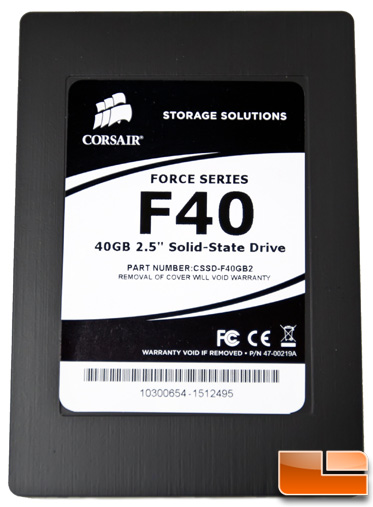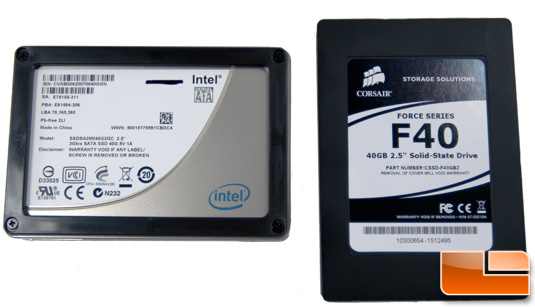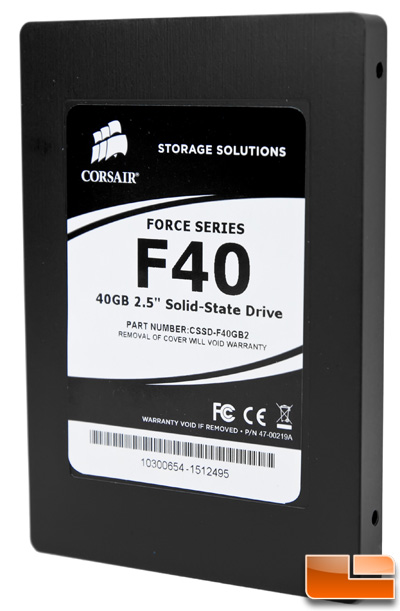Corsair Force 40GB Boot Drive SSD Review
Capacity, Final Thoughts & Conclusions
The over provisioning on the Corsair Force 40GB drive is rather minimal given we have seen some drives with upwards of 30% of the available capacity set aside for drive maintenance. After Windows does its thing with formatting the drive, it ultimately shows 37.2GB available to the user. This leaves 11GB left on the drive for maintenance based on the 48GB physically on-board.

As I referred to in the introduction, 37GB is not a lot of space with a 64-bit installation of Windows 7 and a handful of major applications. With Windows hibernation space and page file allocations plus other temporary files, the usable space gets chewed away quickly. Corsair has a great blog article about optimizing these settings to provide the most efficient use of the storage capacity as well as some overall SSD tweaks. While it’s tight, most users should able to run their core OS and apps on about half of what they are given to use.

If that’s just not going to work for you, there’s another option of running two of these in a RAID 0 configuration which will double the capacity. This is a great option that will also have a positive impact on performance. However, it carries a few downsides. First, it costs twice as much which negates the reason you bought the economical boot drive in the first place. The 40GB drive is currently selling for $109 and the 80GB version is selling for $198 so you actually save a few bucks if you stick with the one larger drive. Second, it doubles the risk of drive failure; however, if you back up your data regularly (and you should!) you mitigate disaster should one drive fail and Corsair does offer a healthy 3-year warranty, as well. Also, not everyone is comfortable with setting up and configuring a RAID
setup although it’s a relatively easy and straightforward process. Lastly, running a RAID array does not allow the TRIM function to do its job, so you lose that maintenance piece although the SandForce drives do a very nice job of maintaining their performance without it.

As far as other options go, the closest competitor is probably the Intel X25-V 40GB drive which can be found for roughly the same price but frankly, that drive is aging fast and overall does not offer the same performance as you will get from the Force 40GB drive. The 40GB Force drive performs superbly, albeit slightly behind its larger siblings. This can mostly be attributed to the lower density NAND but it still offers the fabulous SF-1200 controller with its support of TRIM and its proprietary DuraClass technology.

Legit Bottom Line: The Corsair Force 40GB SSD may be the baby in the Force Series family but that doesn’t stop it from putting up numbers to rival that of its older siblings in most of our tests. If you are considering entering the world of SSDs but don’t want to drop serious coin, this may be one of the best places to start.

Comments are closed.